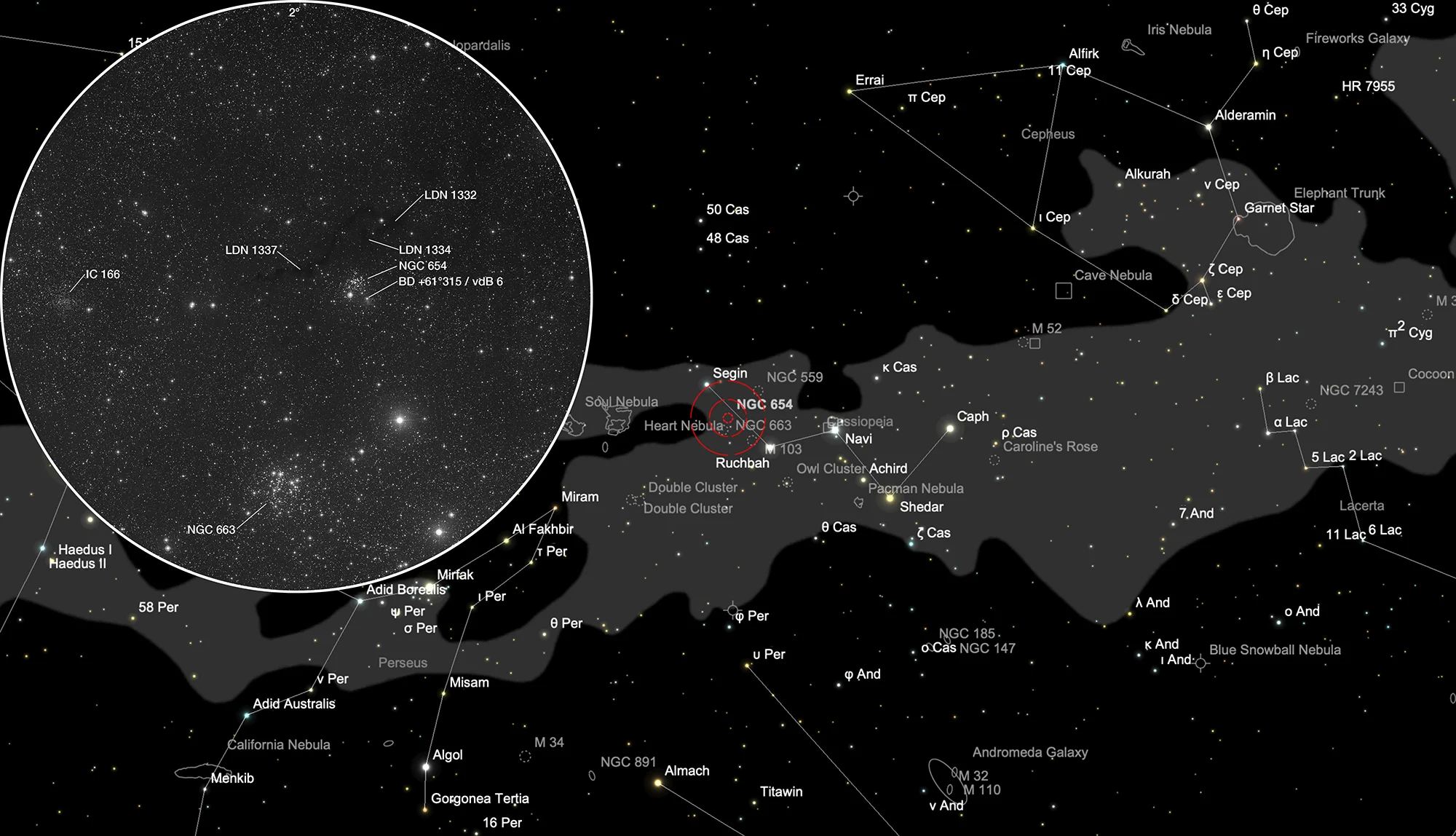Open Cluster NGC 654

History
The open cluster NGC 654 was discovered by William Herschel on 3 November 1787 and listed as VII 46. He noted: «A small cluster of pretty large stars, pretty rich.» [464] John Herschel described listed the cluster as h 145 and noted on 5 October 1829: "A fine rich cluster; stars 11...14m; 3' dia; irreg fig; place that of the most compressed part; one star 6.7 mag, south-following the centre, is ruddy.» [466]
In 1962 Beverly T. Lynds published her «Catalogue of Dark Nebulae» that she found on photo plates of the «National Geographic Palomar Observatory Sky Atlas». She identified a dark elongated cloud north of the cluster and assigned the designations LDN 1332, LDN 1334 and LDN 1337 to the densest patches. [473]
In 1966 the Canadian astronomer Sidney van den Bergh identified the reflection nebula vdB 6 around star BD +61°315. [255]
Physical Properties
| Designation | NGC 654 |
| Type | OCL (II3m) |
| Right Ascension (J2000.0) | 01h 43m 59.4s |
| Declination (J2000.0) | +61° 52' 58" |
| Diameter | 6 arcmin |
| Visual magnitude | 6.5 mag |
| Metric Distance | 2.041 kpc |
| Dreyer Description | Cl, iF, Ri, one * 6·7, st 11…14 |
| Identification, Remarks | WH VII 46; h 145; GC 387; OCL 330 |
Finder Chart
The open cluster NGC 654 is located in the constellation Cassiopeia, roughly 1° north of NGC 663. It is on 22 October in opposition to the Sun. From your location they can best be seen in the months June to March.
Visual Observation
300 mm Aperture: NGC 654, NGC 659, NGC 663 und Messier 103 are several small, loose star clusters in an area of about 3°, which tempt you to indulge in some extensive star hopping with the 21 mm Ethos eyepiece (57x, 1.75°). — 300 mm f/4 Popp-Newton, Hasliberg, SQM 20.9, 18. 10. 2025, Bernd Nies
